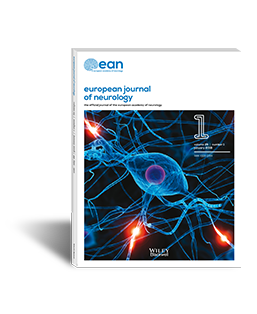Background and purpose
Primary Sjögren syndrome (pSS) is a chronic, systemic, autoimmune disorder characterized by lymphocytic infiltrates of the exocrine organs, leading to sicca symptoms and parotid enlargement. pSS has been linked to various neurological manifestations, including peripheral neuropathy (PN). We aimed to provide a comprehensive analysis of the currently available evidence regarding pSS‐related PN.
Methods
A literature search in the PubMed database was performed, and 49 papers were eligible to be included in this systematic review and meta‐analysis.
Results
The pooled prevalence of PN in pSS is estimated to be 15.0% (95% confidence interval = 10.7%–20.7%). The mean age of pSS patients at PN diagnosis is 59 years. Among the patients with pSS and PN, 83% are females. Neuropathic symptoms usually precede or lead to the pSS diagnosis at a 2:1 ratio in patients with pSS‐related PN. The commonest type of pSS‐related PN is distal axonal polyneuropathy (80% of patients with pSS‐related PN), followed by sensory ganglionopathy. Peripheral and cranial mononeuropathies—particularly trigeminal—are also frequent. Risk factors for developing PN include increasing age and presence of vasculitis. Immune‐mediated pathogenetic mechanisms are discussed. Glucocorticoids are the most commonly used treatment option for managing pSS‐related PN, when associated with vasculitis, followed by the use of intravenous immunoglobulin.
Conclusions
PN is very common in pSS patients. Evidence on long‐term prognosis of PN in pSS is limited, and further research is needed. Research into the use of immunosuppressive medication in nonvasculitic neuropathies in the context of pSS merits further consideration.
